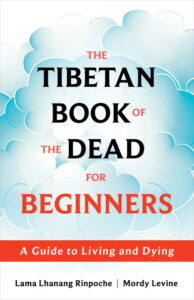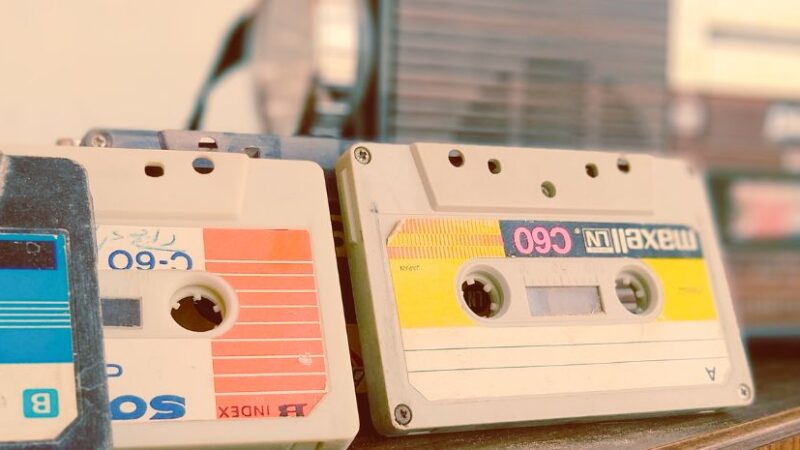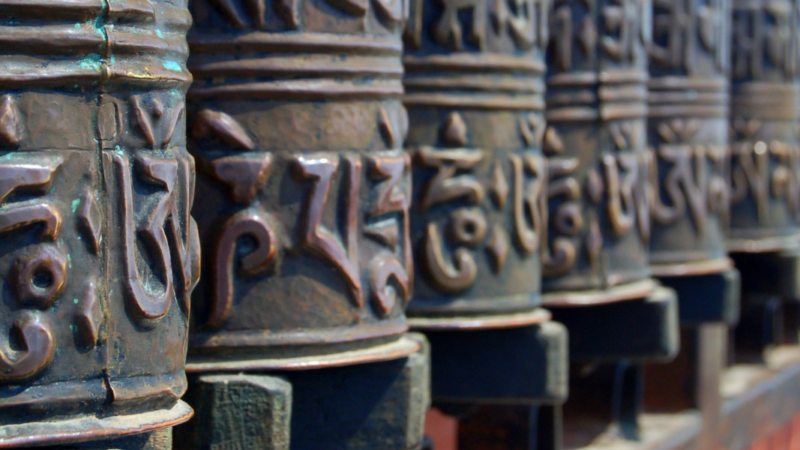Is What You Seek Actually Already Here?

As we let go into the current of truth, it gains momentum, and an increasingly intimate inner dialogue unfolds between our conditioned mind and our unconditioned nature. If you want to cooperate with this process (which I assume you do), it is important to honestly examine your motives.
MEDITATIVE INQUIRY
What Do You Really Want?
Find a quiet, comfortable place where you won’t be disturbed, close your eyes, and take a few deep breaths. Let your attention settle down and in, resting in the heart area. When you are ready, ask yourself: “What is it that I really want?” Let the question go. Don’t go to your mind for an answer. Just wait, listen, sense, and feel. The response may come first as a sensation or as an image before it becomes a word. Or it may come first as a word or phrase.
Whatever comes, check for inner resonance. Does it ring true for you? Something usually lights up, enlivens, releases, or opens up in the body if you have touched an important inner truth.
***
It is crucial to be honest with yourself. Usually we have mixed motives. I certainly did. Even as I was highly interested in discovering what is true, I was also looking for approval from others and wanting to survive. Social acceptance and physical safety are fundamental, closely intertwined desires, and we often need to play them out until we see through them. This usually takes time.
If you believe that your happiness depends upon finding the right partner or career, or upon accumulating wealth or power, you may need to explore these options in order to discover their limitations. Conceptual insight—knowing that happiness does not depend upon circumstances—is rarely enough. Your life experience is a vital curriculum, and there will be a number of opportunities to experience its fierce grace.
You may be able to speed up this process by asking yourself what you imagine you will gain if you acquire the objects or meet the goals you are seeking. As a thought experiment, complete some of the following sentences that resonate for you:
If I find the right partner, I will feel _________.
If I have children or grandchildren, I will experience _________.
If I have enough good friends or belong to the right community, I will feel _________.
If I have the right job or career, I will be _________.
If I have enough money and own a home and nice car, I will be _________.
If I have better health, I will _________.
If I eat enough delicious food, have great sex, travel to enough interesting and exotic places, and work hard enough, I will finally _________.
If I am at the right place at the right time in the future, I will _________.
If I discover my soul’s purpose, I will _________.
Then ask yourself:
Is it true that what I seek is not already here?
If you let your heart wisdom answer, this last question can be a mindbender. The strategic mind will be stunned. If you trust your heart’s answer and act on it, you will master life’s curriculum much more quickly, avoiding some of its remedial dead ends.
As intention clarifies, attention focuses.
Of course, we can gain some degree of transient satisfaction if the above if-then statements are fulfilled, but there will always be an underlying sense of dissatisfaction until the Deep Heart is consciously recognized. My teacher Jean Klein often observed that “the object never fulfills its promise.” Certainly not for long. Have you noticed that once we attain an object or reach a goal, the hunt is soon on again? Although part of us enjoys the drama of the chase, it is the respite from the search that we most want—the true homecoming.
Once we discover an underlying wholeness in the depths of our being, the relationship to desire changes. We are much less attached to getting what we want and much more grateful for what we have. It is a path of natural contentment rather than willful renunciation. An inner sense of fullness arises that is increasingly independent of circumstances, and we feel happy for no particular reason.
Journey into the depths of your own heart with Dr. John J. Prendergast’s guide, The Deep Heart: Our Portal to Presence.

John J. Prendergast, PhD, is a spiritual teacher, author, psychotherapist, and retired adjunct professor of psychology who now offers residential and online retreats. For more, please visit listeningfromsilence.com
Buy your copy of The Deep Heart at your favorite bookseller!
Sounds True | Amazon | Barnes & Noble | IndieBound


Ayurveda Lifestyle Wisdom
Dear Wisdom Seekers,

I am writing to tell you that anything is possible.
You have the potential to change your state of health for the better—permanently. Thanks to Ayurveda, the profound 5,000-year-old health awakening wisdom from India, I have successfully overcome a genetic challenge that wanted to restrict me to a wheelchair. Today, I walk happily, even run, and live my life to its fullest.
In my new book, Ayurveda Lifestyle Wisdom, I share real-life journeys of transformation from people with conditions such as ulcerative colitis, multiple sclerosis, depression, and chronic obesity. Indeed, this wisdom is ancient, but ever so relevant to our modern epidemic of lifestyle disorders.
In addition to its restorative principles, Ayurveda is preventative, eco-friendly, and cost effective. You literally construct your health in your own kitchen and backyard. Perhaps this explains its rising popularity all over the world. Countless people are laying claim to this joy-bearing health by implementing a nature-inspired, seasonal lifestyle from the art, science, and spirituality of Ayurveda that sheds a beautiful light on the three pillars of health – sleep, sex, and food!
In a sense, my book is a vehicle to document the experiential and spiritually charged instruction of my formative years. You see, I grew up in India in a tiny riverside town, resplendent with golden sunshine and the call of peacocks dancing in the monsoons. The mystic Himalayas gifted my soul with an immense river, the Sarayu, on whose serene banks I conversed, contemplated, and meditated as a young student with my teacher—a renowned yogi and healer, who was also my kind-hearted grandfather.
Every morning, I learned not only to cup my palms to reach out for the beautiful river water and splash it on my face with glee, but I also learned to recapture handfuls of hope. When we beautify each day with a scared lifestyle, we connect our mundane existence with something sublime and potent within us.
This is how I learned Ayurveda’s secrets, heart to heart, soul to soul, by journeying first within myself to explore my own infinite potential. And this is how I share them with you in Ayurveda Lifestyle Wisdom—step by step and from my heart.
I believe my book will awaken something invisible within—a powerful presence and an inner knowingness. Remember, a well-lived day is medicine unto itself.
PS- “Acharya” is my traditional title in Sanskrit, which means “master teacher.” Shunya is my name. And you can always go to acharyashunya.com to read more about the book and my journey.
Radiantly yours,
Shunya

Effortless Mindfulness: A Universal Practice for Everyone

My introduction to the immediate effects of effortless mindfulness in Nepal allowed me to see that I did not need to remain in the East, join a monastery, or practice in a cave to discover the well-being, clarity, and open-hearted awareness that were already within me. I returned to the United States to continue to train with eyes open in the midst of my day-to-day life.
I have no doubt, as I look back now, that it was the natural compassion of open-hearted awareness revealed by effortless mindfulness that propelled me to pursue a second master’s degree in clinical social work. As I felt a deeper connection to everyone, I wanted to train for a life of service to those most in need. I also got sober, went to weekly psychotherapy, continued psychotherapist training, and got married to the love of my life, Paige. At this time, I was also asked to join the Teachers Council of the New York Insight Meditation Center, where I taught deliberate mindfulness practices. I continued to attend teachings and retreats to develop and deepen my practices and studies with a variety of nondual and effortless mindfulness teachers.
Right after graduate school, I went to work in New York City at the Brooklyn Mental Health Clinic. This was an outpatient community center that provided psychotherapy for people who had been psychiatrically hospitalized or were living in a halfway house and attending a psychiatric day-treatment program. It was during breaks or when clients missed sessions that I began exploring and developing the mindful glimpses found in my book, The Way of Effortless Mindfulness, that are versions of the ancient wisdom practices I learned during my travels.
As I gazed out the window into the open sky from my seventeenth-floor office, I began to explore my own mind to see how suffering was created and relieved. I noticed how identification with a thought, feeling, and parts of my personality collapsed my thinking into a narrow perception of both myself and others. I practiced shifting my awareness from a contracted small self to a new way of seeing and being, which was more open-minded and open-hearted. I also noticed how, when I intentionally separated awareness from thinking, I could awaken to an already spacious and interconnected view that was free of a deep kind of suffering.
For example, if I was feeling upset, I would acknowledge my feelings and shift awareness out of the cloud of stormy emotions and then, from this open mind and open heart, return to the emotions with a new view. This brought such relief and joy! It was like emerging from a dark tunnel to a beautiful view, except I was not only seeing the view. It was as if I were viewing from an open, quiet, loving intelligence that was connected to everything. How could this freedom be so close and yet so hidden from most people’s day-to-day experience? How was it that despite all the progress humanity has made in other areas—like medicine, communication, and technology—that shifting into awake awareness was not something that was recognized and taught to everyone?
I approached these explorations of the anatomy of awareness with curiosity and wonder. It was exciting to experiment and reverse-engineer practices from the wisdom traditions I had studied in India, Sri Lanka, and Nepal. One of the approaches to awakening that I draw from, Sutra Mahamudra, originated in North India. It is a tradition that is like a bridge between the three main traditions of Buddhism: Theravada, Mahayana, and Vajrayana (Tibetan). One reason I was drawn to it is that it focuses on practices for everyday people, not just monastics, to awaken in the midst of their daily life. One of my teachers, Dzogchen Ponlop Rinpoche, wrote that Sutra Mahamudra “is seen as a profound method because it does not require any of the sophisticated and complex tantric rituals, deity yoga visualization practices, or samayas [vows]. Sutra Mahamudra has a tradition of skillful means that contains profound methods of directly pointing out the selfless and luminous nature of mind.” I began to try to translate ancient practices I had learned from many teachers and texts into accessible, contemporary language and forms. I checked in with teachers such as Traleg Rinpoche to make sure the practices were staying true to the essence of the teachings as I translated them. I also began to notice that if I remained receptive, it was as if awake awareness started showing me the anatomy and principles of awakening. I started calling these contemporary versions of ancient wisdom practices “Brooklyn Mahamudra.”
This is an excerpt from The Way of Effortless Mindfulness: A Revolutionary Guide for Living an Awakened Life by Loch Kelly.

 Loch Kelly, MDiv, LCSW, is a leader in the field of meditation and psychotherapy. He is author of the award-winning Shift into Freedom and founder of the Open-Hearted Awareness Institute. Loch is an emerging voice in modernizing meditation, social engagement, and collaborating with neuroscientists. For more, visit lochkelly.org.
Loch Kelly, MDiv, LCSW, is a leader in the field of meditation and psychotherapy. He is author of the award-winning Shift into Freedom and founder of the Open-Hearted Awareness Institute. Loch is an emerging voice in modernizing meditation, social engagement, and collaborating with neuroscientists. For more, visit lochkelly.org.
Buy your copy of The Way of Effortless Mindfulness at your favorite bookseller!
Sounds True | Amazon | Barnes & Noble | Indiebound

What is awakening? The Wake Up Festival presenters respond…
Last August, in the beautiful Rocky Mountains, over 800 people gathered together to explore the nature of spiritual awakening, and the mysteries of opening the human heart. Shot on location during our first annual Wake Up Festival, the following video features 16 of our dear presenters and collaborators sharing what awakening means to them.
We invite you to join in the dialogue, as we have come to see that there are seven billion unique perspectives and doorways into awakening – one for each human soul. So, please, let us hear your voice, and your heart. What is spiritual awakening for you?
The Modern Science of Nostalgia
In the first two decades of this new century, the science of nostalgia has exploded. There are now hundreds of published scientific studies exploring a wide range of questions about how humans experience nostalgia and the different roles it plays in daily life. Scholars from all over the world are now conducting diverse studies about the ways nostalgia influences our lives.
Keeping in mind the history of nostalgia, it’s amazing what we are now learning. Nostalgia is certainly not a disease and it’s far more than just a source of entertainment. By using the gold standard of science—experiments in which research participants are randomly assigned to different treatment conditions—we’ve been able to answer a number of key questions. What causes people to experience nostalgia? How does nostalgia impact how people feel about their current lives? Does nostalgia influence our interests, goals, and behavior? If so, in what ways? Do the effects of nostalgia differ from person to person?
In addition to experimental studies, we have now conducted rigorous survey studies observing how nostalgia naturally occurs and what psychological characteristics, life experiences, and behaviors it tends to be associated with. This has helped us answer other intriguing questions. Are some individuals naturally more nostalgic than others? Is there a nostalgic personality type? Are people more or less nostalgic at different ages? Are people more or less nostalgic when experiencing different life changes such as moving away from home, starting a new career, facing personal tragedy and loss, or experiencing major life disruptions such as a global pandemic?
Over the last two decades, we have asked thousands of people to document their nostalgic memories. This has given us a great deal of insight into the more qualitative experience of nostalgia, which has in turn helped us develop a more complete picture of what happens inside a person’s mind when they take a nostalgic trip down memory lane. These personal stories have guided a lot of my research questions on the topic.
Combining these different approaches to researching nostalgia, mycolleagues and I have made a number of discoveries that cast this old emotional experience in a brand-new light. We’ve put nostalgia under the microscope, and what we’ve discovered is that nostalgia doesn’t cause problems as proposed by past scholars, physicians, and psychologists. On the contrary, problems cause nostalgia.
When people are down because they feel sad, lonely, meaningless, uncertain, or even just bored, they often turn to nostalgia. Nostalgia lifts our spirits and offers stability and guidance when life becomes chaotic and the future feels uncertain. Even though nostalgia contains sentiments of loss, it ultimately makes people feel happier, more authentic and self-confident, more loved and supported, and more likely to perceive life as meaningful. In addition, nostalgia inspires action. Nostalgia starts with people self-reflecting on cherished memories, but it also drives people to look outside of themselves, help others, create, and innovate.
Though I’ve been researching nostalgia for a couple of decades now, I’ve remained excited about the topic because there is still so much to learn and so many ways to apply the knowledge we’ve gained to helping people improve their lives and the world we all share.
Journal Prompts:
Get out a pen or pencil and a piece of paper; or use a digital device, such as a phone, tablet, or computer. Briefly jot down your reactions to the following questions:
- How would you define nostalgia?
- Do you consider yourself to be highly nostalgic, moderately nostalgic, or rarely nostalgic?
- Do you think the activities in which you engage in the present—from your work to your personal hobbies—are meaningfully influenced by nostalgia?
- Do you think nostalgia can help you pursue your current goals and make plans for the future? Finally, what is a nostalgic memory that really stands out as special to you? Describe this memory and how it makes you feel.
Excerpted from Past Forward: How Nostalgia Can Help You Live a More Meaningful Life by Clay Routledge, PhD.
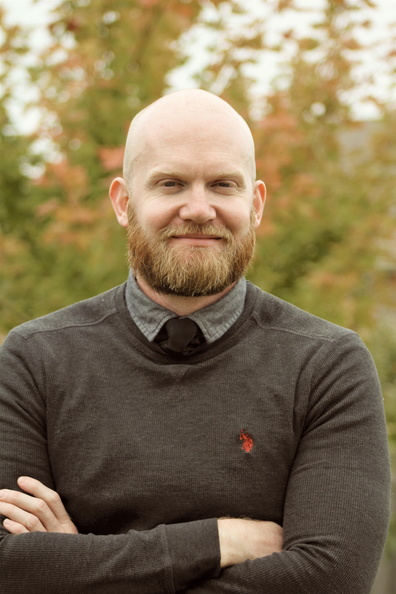
Clay Routledge, PhD, is a leading expert in existential psychology. His work has been featured inn the New York Times, the Wall Street Journal, the Washington Post, the Guardian, the Atlantic, The New Yorker, Wired, Forbes, and more. He is the vice president of research and director of the Human Flourishing Lab at the Archbridge Institute. For more, visit clayroutledge.com.
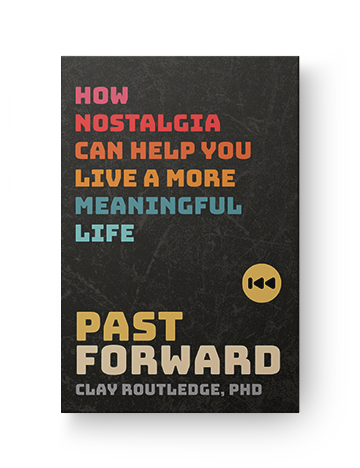
Past Forward
Learn More
Amazon | Barnes & Noble | Bookshop | Sounds True
Tibetan Buddhist Practice for Developing Compassion
Realizing Emptiness and Connection
Take a few minutes to sit peacefully with your eyes closed or looking down. Observe your breath as you breathe in and out.
-
- Allow yourself to breathe naturally, without any modification of the breath.
-
- For a few minutes, simply observe your breath in its most natural state, as it passes through your nostrils.
-
- If you find that you are distracted by your thoughts or sounds, no problem; just go back to observing your breath.
In your mind, see a table.
In English, it is described by the word “table.”
This table is made up of many pieces: a top, legs, glue, nails, and varnish.
The legs and top are made up of wood from a tree. Before the tree was cut down it grew as a result of many variables—sunlight, seeds, rain, earth, and wind, to name just a few.
And before it was a tree, it was a seed from another tree, and another tree before that.
What about the nails or the varnish? Those items can also be traced backward to the people, companies, and components that went into their production.
And the people who created the components also came into being from their parents, and their parents before them.
We now see that everything around us—all phenomena—were caused by something that preceded it and can be traced back to a beginningless time.
Next time, pick another thing, place, or person and go through the same logic. As you go about your day, notice everything around you and apply the same logic.
When you walk around your work or home environment, notice that everything is empty of inherent existence. Everything has a name that refers to a thing that comes together for a time.
Zen teacher Norman Fischer said:
- In the end everything is just designation: things have a kind of reality in their being named and conceptualized, but otherwise they actually aren’t there in the way we think they are. That is, connection is all you find, with no things that are connected.[. . .] It’s the very thoroughness of the connection—without gaps or lumps in it—only the constant nexus wherever you turn—that renders everything void. So everything is empty and connected or empty because connected. Emptiness is connection.
This is an excerpt from The Tibetan Book of the Dead for Beginners: A Guide to Living and Dying by Lama Lhanang Rinpoche and Mordy Levine.
